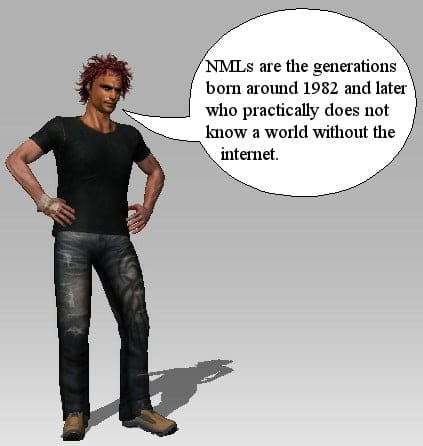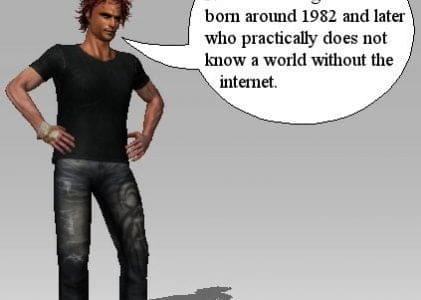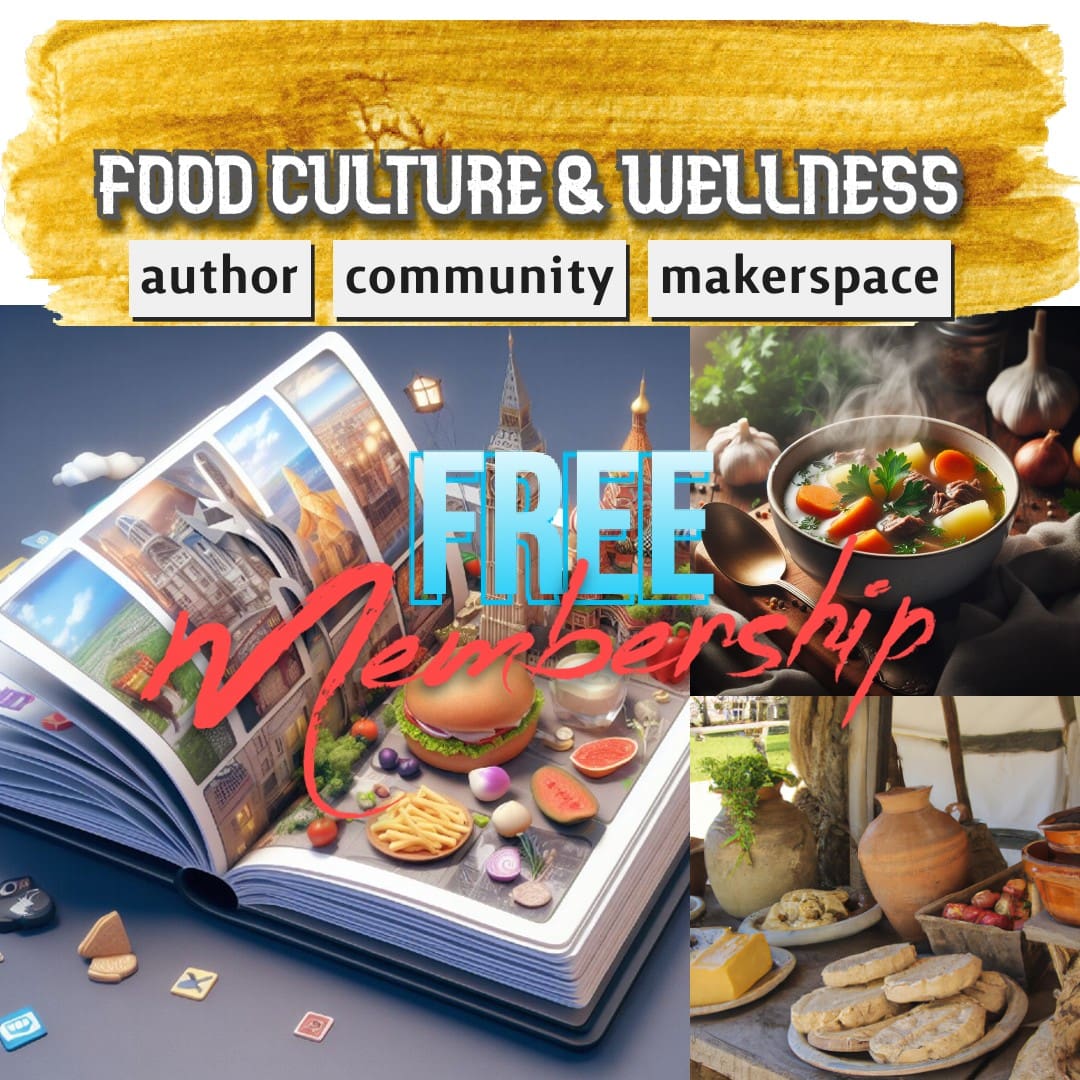 The European Parliament and the Council of Ministers present digital competence as one of the key areas to the life-long learning. For the net-generation, defined by OECD as New Millennium Learners (NML), the problem is reversed. This generation grew up with a diversity of digital techniques and can be counted on as digital natives. Their problem is that the educational system too often is not adapted to their prerequisites and habits.
The European Parliament and the Council of Ministers present digital competence as one of the key areas to the life-long learning. For the net-generation, defined by OECD as New Millennium Learners (NML), the problem is reversed. This generation grew up with a diversity of digital techniques and can be counted on as digital natives. Their problem is that the educational system too often is not adapted to their prerequisites and habits.
NMLs are the generations born around 1982 and later who practically does not know a world without the internet. Characteristic for NMLs is, among other, that they prefer active media consumption prior to passive, for instance internet and computer games before television. They are always wired and accessible through e-mail, texts, messenger and social media. They love the new media technique, but dislike user manuals. Since they demand that the media application should be designed to be intuitively understandable from the first time of use.
The world of today contains varied forms of media with an unlimited supply of applications and content. The difference from the 2000th Century is that today an employment often includes multiple tasks that often should be done at the same time. This is an environment that NMLs are very familiar with. They spend the day online, talking in the cell phone, watching television and doing the home work simultaneously. This phenomenon will not disappear on the contrary multi-tasking will make the 2000th Century assembly production line method slowly fade away. As a consequence the linear working and learning method is to a high degree a blind alley for those who want to be competitive on the labour market of today.
Another consequence is that the social patterns are changing since the NMLs always are wired. Relations are distinguished by easy access and personal interest instead of geography. In other words what the local neighbourhood has to offer is loosing importance. Contacts shall emerge in real-time, often unplanned, and sources of information have to be accessible a few mouse-clicks away.
In this perspective NML contributes to a big step forward to the individualization process that has been going on for the last 500 years. This is expressed in several ways. The NML generations prefer learning-by-doing instead of being told what to do. They believe that they themselves can contribute to change and improve, and that science and technique are the solution to the most complicated problems. This spirit makes them extremely purposeful, and they understand the importance of a good education to be able to reach their goals.
The traditional school education has to be renewed to fit the behavior of the interactive NML generation. The tools for this are interactive teaching media, social media, such as wiki for analysis and editing, blogs for presentation, opinions and comments, and why not traditional lessons in the three-dimensional world Second Life (or similar websites)? This means that eLearning is the key which furthermore means that the NMLs always stay wired to the learning-process. Motivation and inspiration is already included in the concept for the NMLs since this is their own home ground.
In this sense even SCORM, the standard for e-learning material, is becoming too limited. SCORM works well in freestanding interactive learning material, but does not handle the collaborative functions and structure of the social media. Because of this, IMS Global Learning Consortium, that developed SCORM in the late nineties, has started working on a new standard. The project is called Common Cartridge and aims at solving two problems. The first is to create a standard for digital course material with collaborative functions to be used in learning platforms online, and the second is to make new publication methods possible for module based course material. This is part of the development of Learning 2.0 where the NMLs are one of the most important driving forces.
Author: LarsGoran Bostrom
Opens in a new tab



